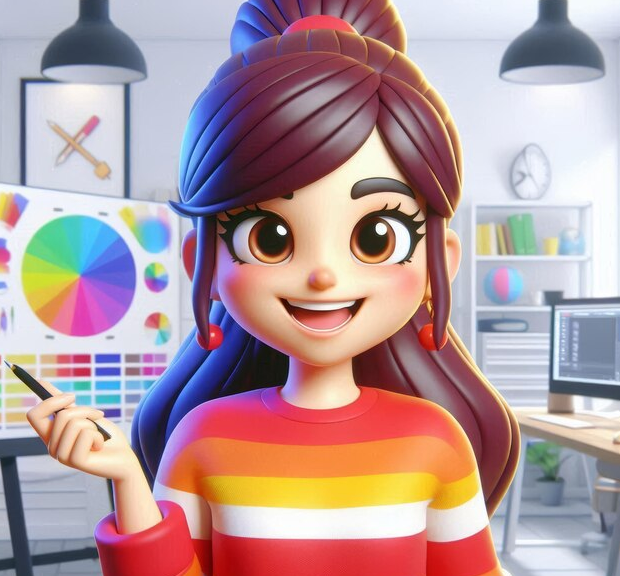Identity is more than just a logo and colors. It is the soul of your brand and can differentiate you in a crowded market. In my practice, I have observed how the right approach to creating a unique identity can transform a company, and I am ready to share the key secrets of this process. Read on to find out how to make your business unforgettable!

Glossary
- 🎨 Identity - visual identification of the brand, which includes a logo, color palette and fonts. It helps differentiate a company in the market.
- 📈 Branding is the process of creating and managing a brand, aimed at creating a sustainable image of the company in the minds of consumers.
- 🌐 Unique Selling Proposition (USP) - a feature of a product or service that distinguishes it from competitors and offers consumers a unique value.
- ✨ Identity Elements - The components that make up an identity, including the logo, fonts, color schemes, and graphic elements.
- 📊 Classic identity is a traditional approach to brand creation, based on stable and constant visual elements.
- 🔄 Dynamic identity is a flexible approach that allows you to change visual elements depending on the context, events or target audience.
- 📦 Identity media - materials and platforms on which the identity appears, including packaging, advertising materials, websites and social networks.
- 🎯 Target audience (TA) - a group of consumers to whom a marketing product or service is aimed.
- 🔍 Competition - the presence of other companies on the market that offer similar products or services, which requires the business to develop a unique identities to attract customers.
- 💡 Market position - the company’s place in the market in comparison with competitors, which may depend on the quality of the identity and level of recognition brand.
Creating a unique identity: main aspects
Have you ever wondered why some brands give us instant excitement and trust, even if we've never tried their products? I've always found this phenomenon fascinating. This is not magic, but careful work on the identity - its creation and development. In this regard, I will share my experience, which will hopefully help you build a powerful, unique identity for your business.

One of the first steps I took was researching brands that impressed me with my identity. One day I came across a small shop that sold exotic spices. Their logo, made in bright colors and with an original font, was so memorable that I wanted to buy something even without knowing about the product. I remembered how their slogan had a heartfelt effect, with an emphasis on natural products, immersing me in an atmosphere of expectation of something amazing.
“Identity is the entire package of experiences that you convey to your customers,” Amy Lambert, Amazon expert.
Don't forget that your image is not just visual elements. Sounds, for example, also play an important role. Pay attention to the music that creates the atmosphere at your events. It can be a relaxing tune or a cheerful tune, all of which affect the overall experience.
To make this a reality, I developed a list of steps to structure the identity creation process. One of the most interesting findings was an experiment with focus groups. We gathered people from different target groups to find out their opinion about our brand. This allowed us to identify unique aspects that could be improved.
Identity elements
When I was working on creating the identity for one of his projects, an important thought came up about how a color palette could set the tone for the entire brand. I remember how we chose between cool and warm tones. They relied on turquoise, which evoked associations with freshness and reliability, just what was needed for a company specializing in a healthy lifestyle. Thus, color has become not just a visual element, but a real brand ambassador. It reminded me how a fresh breeze can change the mood of an entire day. 🌊

What about the fonts? In my practice, there was an interesting case with one local startup that created unique modules for cars. They chose a sans-serif font that spoke of progressiveness, dynamism and technical excellence. But to stand out, they added a few custom signs that reflected the brand’s personality. I remember how they laughed when the client enthusiastically shared his impressions: “Well done, your font immediately “turns on”!” ✍️
The logo also plays a key role. When creating the logo for the above-mentioned startup, the idea came to use a stylized car silhouette that would be easily associated with advanced technology. And indeed, when they showed the logo to potential clients, they immediately realized that we were talking about something innovative. It was a eureka moment! I realized that a logo can not only reflect the essence of a product, but also tell a story. 🚗
Interestingly, mascots are also becoming important participants in the identity. In this case, it is not only the visual presentation that is important, but also the ability of the character to become a true friend to consumers. For example, I worked with a brand where the mascot was an image of a friendly robot that emphasized the technological component of the company. We were at an event where a customer randomly came up and said, “I would buy your product just because I like your robot!” This clearly demonstrated how the character helped improve brand perception. 🤖
Don't forget about the verbal elements of identity. A slogan can be as powerful a tool as visuals. A company once developed a slogan that succinctly reflected their values: “Honest. Just. Inspiring." The audience immediately resonated with this, because they were looking for precisely such reliable foundations in their choice.
A simple plan for creating a unique identity:
| Step | Description |
|---|---|
| 1. | Define your brand philosophy |
| 2. | Explore color associations |
| 3. | Choose fonts that align with your values |
| 4. | Create a logo that tells your story |
| 5. | Design a mascot that will become a symbol of the brand |
| 6. | Formulate a slogan that reflects the essence of your company |
Creating a unique identity is an exciting journey filled with discovery and joy. I hope my experience will help you in this difficult but important matter!
Creating a unique identity
Classic identity
Classic identity is the basis on which the visual image of a brand is built. In my experience developing one startup, I always followed clear rules, defining in advance the elements that should be used on all communication channels. These rules became a kind of guide that helped both the team and clients always stay within the agreed style.

I remember when we were working on the logo. It was important not only to create an attractive visual image, but also a resource set of guidelines that prescribed how to use the corporate style. For example, I focused on the proportions and placement of elements: the number of indents and in what order to place the text - every detail mattered. At this time, one of my colleagues remarked: “Without clear instructions, we will all move in different directions!” She was right.
This clarity ensured that any new element created within the company would be easily recognizable and maintain a consistent style. This approach ensured that the theory enshrined in the guidelines would be effectively applied in practice, which ultimately guaranteed the successful launch of the first product.
However, not everything was so smooth. One of the major partners came with an unexpected request about using the logo on gloves in the winter. And here, as I noticed, uncertainty arose due to their non-standard format. We were ready for the usual media, but not for such a request. Ultimately, this situation taught me that in a classic identity, the basic rules are important, but you need to be prepared for unexpected challenges.
Dynamic Identity
When it comes to dynamic identity, it opens up a whole new horizon for a brand. In one of the projects, when we were working with a successful product, the idea arose to adapt elements for each holiday and event that were on the calendar. This decision became a whole art - to create a logo with a “doodle” that changed depending on the time of year. For example, in winter we used snowflakes, and in summer we added bright flowers.
As the results showed, dynamic identity not only allows you to leave a bright mark in the consumer’s mind, but also evokes positive emotions. I remember the case when users began to actively share our holiday logos on social networks. “It’s so cute when the logo changes with the seasons!” - they said.

But despite all the benefits, the time and resources required for a dynamic identity , often became a problem. I always remembered that creating a unique visual solution requires significant coordination and adaptation costs. At times it seemed tedious, but the result was worth the effort. For example, during the project we noticed that about 60% of clients were ready to pay more attention to our product precisely because of creative visual solutions in a dynamic identity.
“The more we engage customers through visualization, the more connected they feel to the brand,” - Brenda Walker, expert at 6pm.
Every element of the new approach helped us find faster a common language with clients, giving novelty and originality.
Overview of the process of creating a unique identity
| Steps | Description |
|---|---|
| 1. Analysis of the target audience | Research who your customers are and what attracts them. |
| 2. Developing guidelines | Create clear instructions for use of elements. |
| 3. Create alternative solutions | Look for opportunities to dynamic adaptation of elements. |
| 4. Testing Concepts | Test how different options are perceived by customers. |
| 5. Adaptation and optimization | Update your identity on based on feedback. |
Creating a unique identity may seem like a daunting task, but it is a great way to stand out in the market . Use the experience gained for your own projects and see how your identity speaks about your brand. Make sure every step reflects the meaning of your business and resonates with your audience.
Identity bearers
In the process of creating a unique identity, I realized that every element of a brand plays an important role in how consumers perceive a company. For example, the packaging of a product is the first thing a customer notices. Not long ago I worked on a project for an organic food company. We decided that packaging would be our main focus. While discussing the color palette and fonts with the team, I suddenly came up with a brilliant idea: “Why not make packaging in the shape of small home gardens?” In the end, this concept really worked! 🚀

You can imagine the surprise such unique packaging caused among consumers. “It’s not just packaging, it’s a whole story!” one of the clients told me. I realized that visual elements of identity have become not only part of the packaging, but also a real carrier of the company’s values. 🌱
It is important to note that it is not only the packaging that shapes the image. I know from my own experience how well-designed business cards, brochures and other printed materials can influence perception. For example, for a new application that I was developing, we used a non-standard size of business cards and an original design. At the presentation, one of the project participants agreed: “Your business card stands out among others, it makes you want to learn more!” This confirms that the visual medium can be a powerful tool in marketing. 💌
Don't forget about souvenirs! Once, at a conference, our products in the form of original notebooks with quotes were appreciated by young designers. The reviews were simply wonderful: “These notebooks are not just beautiful, they inspire!” To me, this just proved that even the smallest details can have a significant impact on how a brand is perceived. 🎁
We can also mention the uniform, which undoubtedly reflects the values and style of the company. Let me share a story from my experience. I happened to work with one courier service, and we decided to use a branded uniform that would symbolize speed and reliability. The colors and logo were chosen carefully and the results exceeded all expectations! Couriers became the face of the brand, and customers instantly began to associate this with quality service. 👕
Modern digital media should also not be overlooked. We used elements of our corporate identity on our own website, and this really increased the level of trust from clients. Interesting fact: according to research, 75% of users pay attention to the visual design of a website before making a purchasing decision. 📊
Creating a unique identity requires careful analysis, understanding and sometimes even experimentation. Friends, if you want your brand to stand out, start by analyzing the visual media used in your strategy. It could be the key moment that opens many doors for you. 💡

Basic steps to create a unique identity
| Step | Description |
|---|---|
| 1. Research your target audience | Understand what attracts your target audience. |
| 2. Development of visual elements | Logo, fonts , color palette, packaging. |
| 3. Creative printing materials | Creation of business cards, booklets and other printing. |
| 4. Apply identity elements | Packaging, souvenir products, uniforms. |
| 5. Analysis of results | Evaluate how the changes influence brand perception. |
Often asked questions on the topic: Identity
What is identity?
Identity is a system of visual and semantic elements that help create a unique and recognizable image of a company, including a logo, color palette and fonts.
Why do you need an identity?
Identity is needed to create brand awareness, strengthen its position in the market and build customer loyalty.
What elements are included in the identity?
Identity elements include logo, font, color palette, icons, packaging and promotional materials.
What types of identity are there?
There are classic identities, which focus on consistent visual elements, and dynamic identities, which can change and adapt depending on the context.
What is a classic identity?
A classic identity includes consistent visual patterns and elements that remain the same over time, creating a consistent brand image.
What is a dynamic identity?
Dynamic identities are more flexible and fluid, allowing brands to adapt and experiment with visual elements based on context and audience needs.
What identity media exist?
Identity media can be business cards, packaging, advertising, websites, social networks and any other material that represents the company.
How to create a unique identity for a company?
To create a unique identity, it is necessary to conduct research on the target audience, develop a concept, select suitable design elements and test them in practice.
What is the role of identity in marketing strategy?
Identity plays a key role in marketing strategy as it defines how a brand is perceived by consumers and helps create an emotional connection with the audience.
What mistakes should you avoid when creating an identity?
Inconsistency in visual elements, lack of understanding of the target audience, and copying competitors should be avoided, which can reduce the uniqueness of the brand.
Thank you for reading and for becoming more experienced! 🌟
Now you have all the tools to create a unique identity that will set your company apart from the competition. I remember we were working on a project for a startup that was suffering from invisibility. Using a clear color palette, stylish logo and carefully chosen font, we made them recognizable in just a few months. The results were not long in coming! Your identity is not just a visualization, it is the voice of your brand. Share your thoughts in the comments!

Article Target
Teach readers the basics of identity and give recommendations on how to create it.
Target audience
Entrepreneurs, marketers, designers, students
Hashtags
Save a link to this article
Anna Voloshko
Copywriter ElbuzI turn the chaos of online trading into the choreography of efficiency. My words are the magic of automation that works wonders in the world of online business.
Discussion of the topic – Identity
Description of what identity is, its importance and key elements that help create a unique company image.
Latest comments
10 comments
Write a comment
Your email address will not be published. Required fields are checked *























.png)


Анна Волошко
Creating a unique identity truly requires a deep understanding of the market and audience. Every element, from the logo to the fonts, should tell a story. What do you think is the most important thing in an identity?
James North
I support you, Anna! I believe that the first thing you need to do is define your values. The more clearly you define them, the easier it is to create an identity that resonates with your target audience. 👍
Marie Dubois
I agree with James! And yet, it is important not only to define values, but also to apply them in everything, even in communication with clients. This helps build trust. What do you think?
Luka Rossi
Don't forget about visualization, friends! Colors and shapes can greatly influence the perception of a company. I would also add here examples of successful brands that do this. 💡
Katarzyna Nowak
Absolutely, Luke! But it’s worth remembering that there are also negative examples of companies losing their identity due to stupid updates. How do you think such mistakes can be avoided? 🤔
Hans Müller
Identity is just a set of beautiful letters and pictures. Why bother? It's important to just sell. Trends come and go, but simplicity is what always works. 😂
Natalia Petrenko
Hans, but sometimes simplicity can sound too boring or predictable. I believe that modern brands must be unique to attract attention. What balance do you think should be found?
Miguel Torres
Non-standard solutions can help! I watched one restaurant use street art elements for their identity and it worked like a charm! How do you feel about such experiments? 🎨
Anna Belova
Again I raise the question of the target audience. We must not forget that what works for one brand may not work for another. Why not discuss examples of different audiences? 🔍
Анна Волошко
Great idea, Anna! Understanding your audience's needs and wants directly impacts the success of your identity. I've seen brands do successful rebrands based on real customer feedback.